Danitrio Red Tamenuri on Mikado Fountain Pen


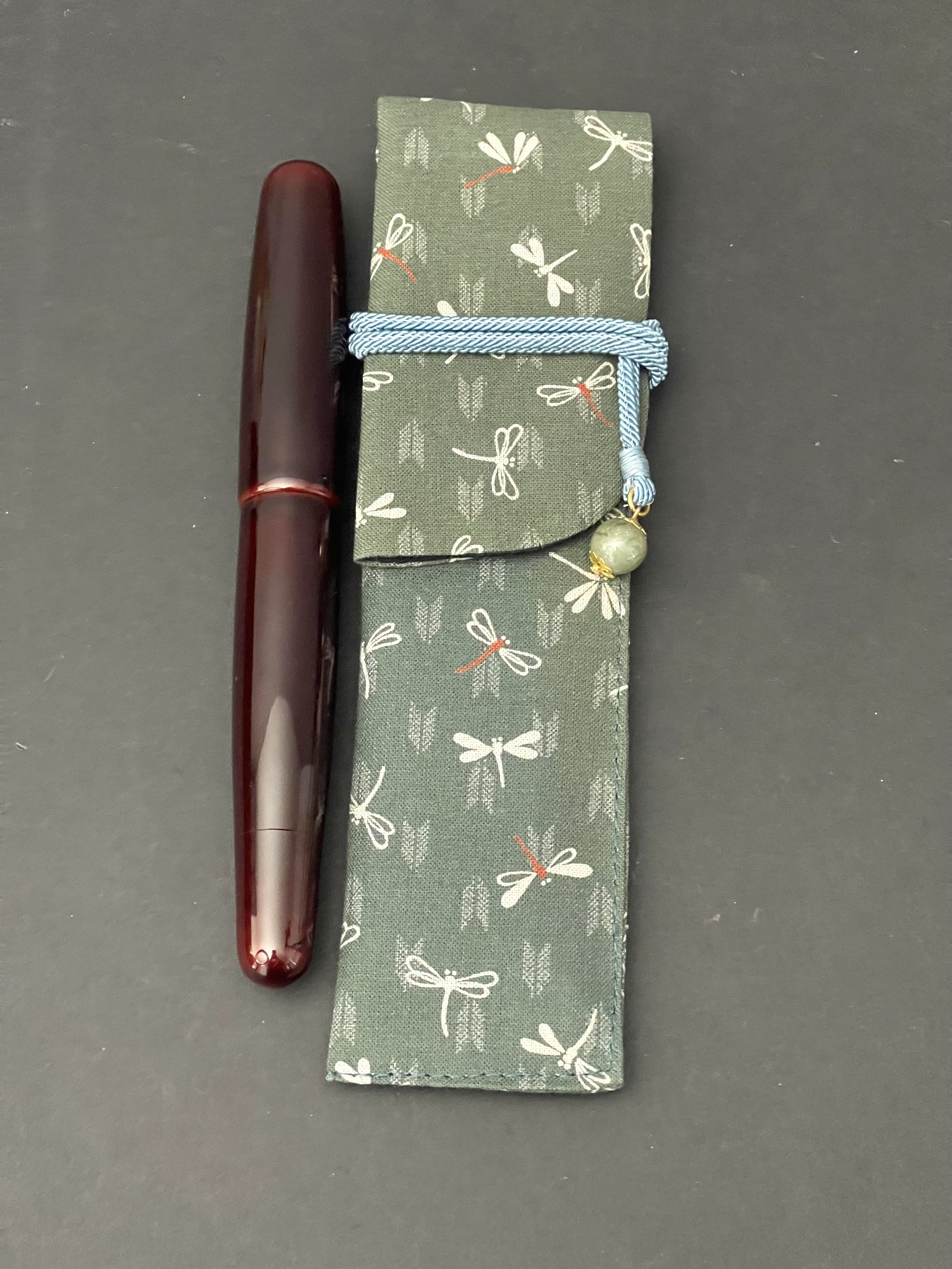

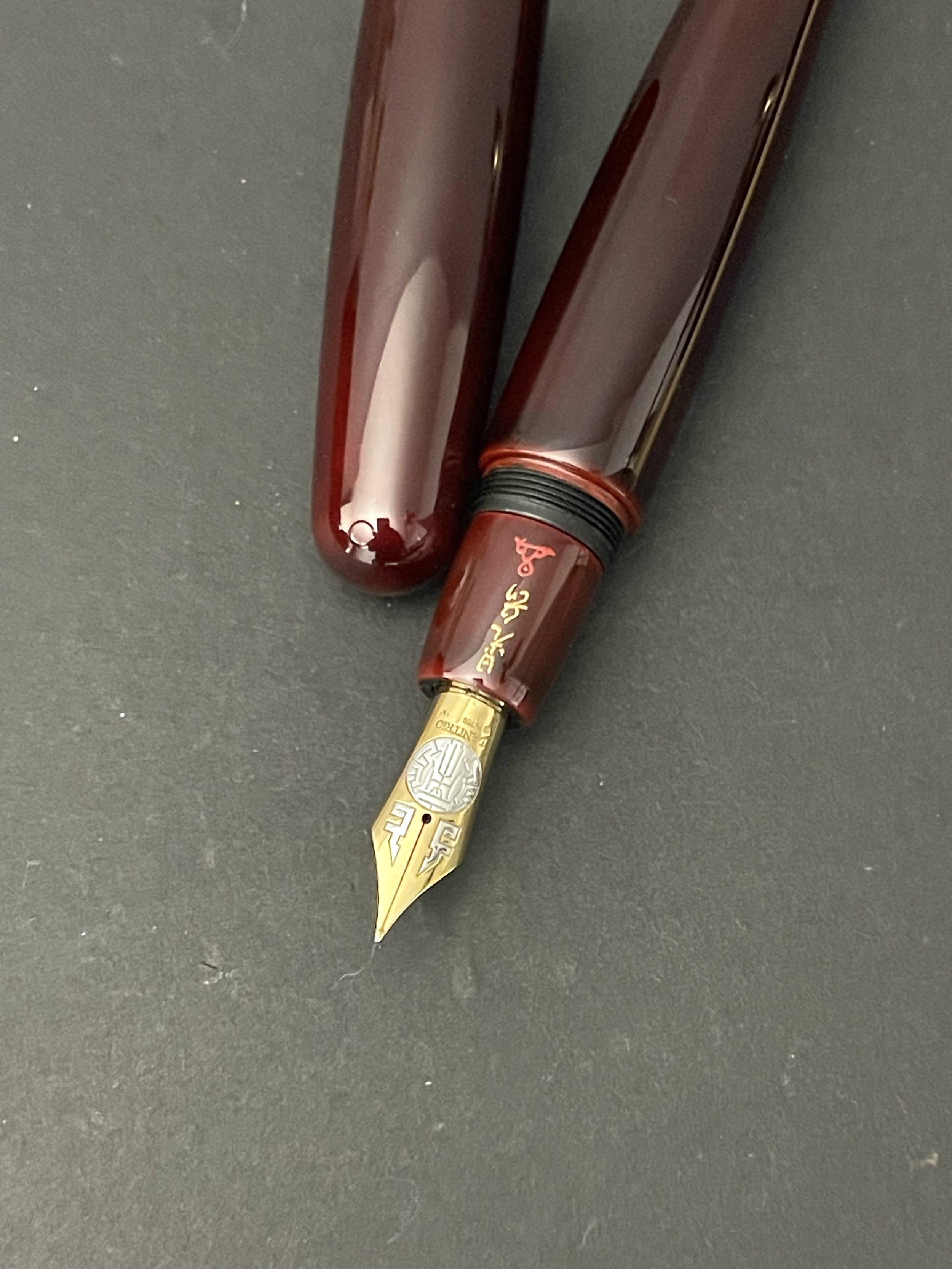

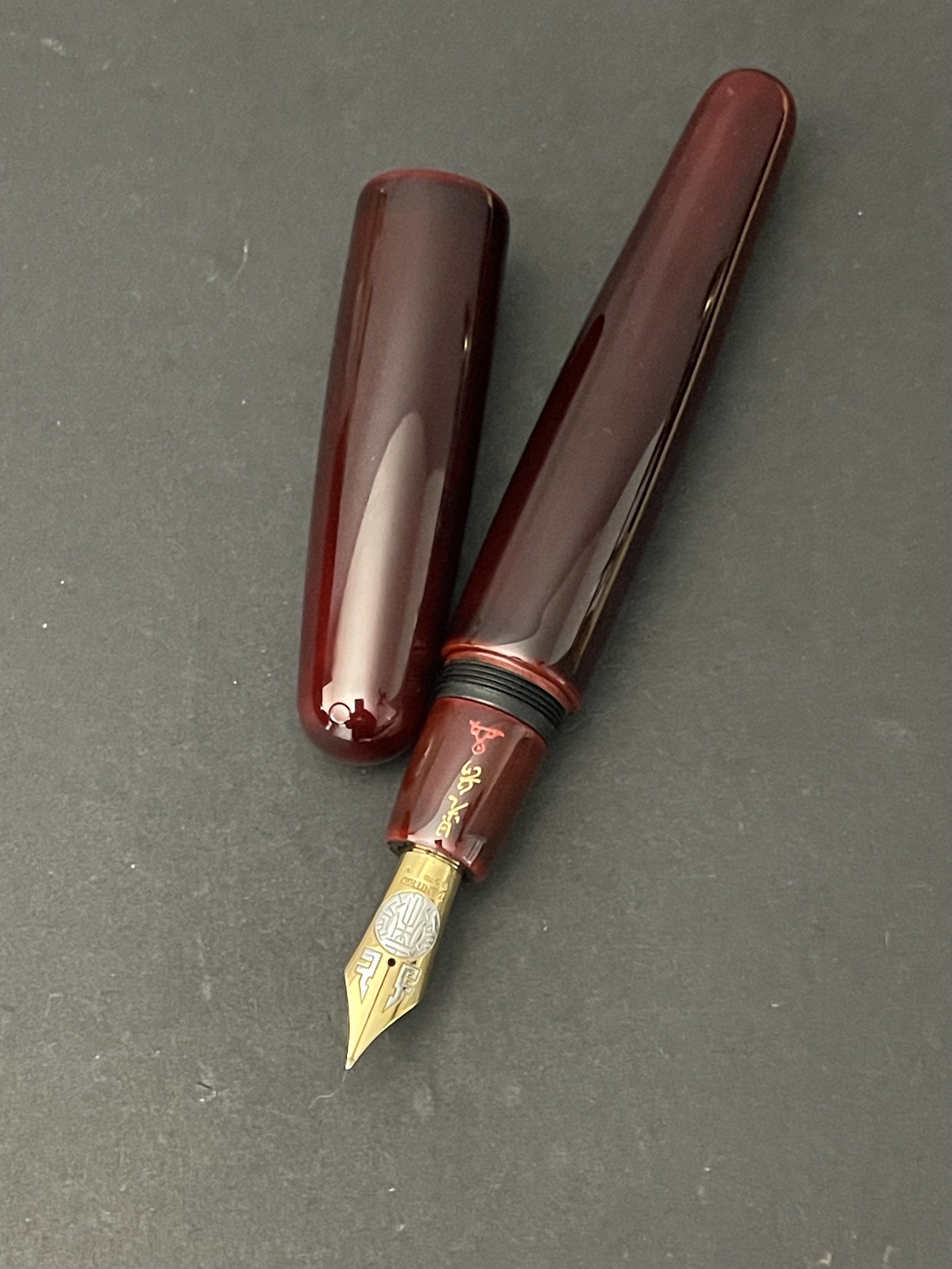


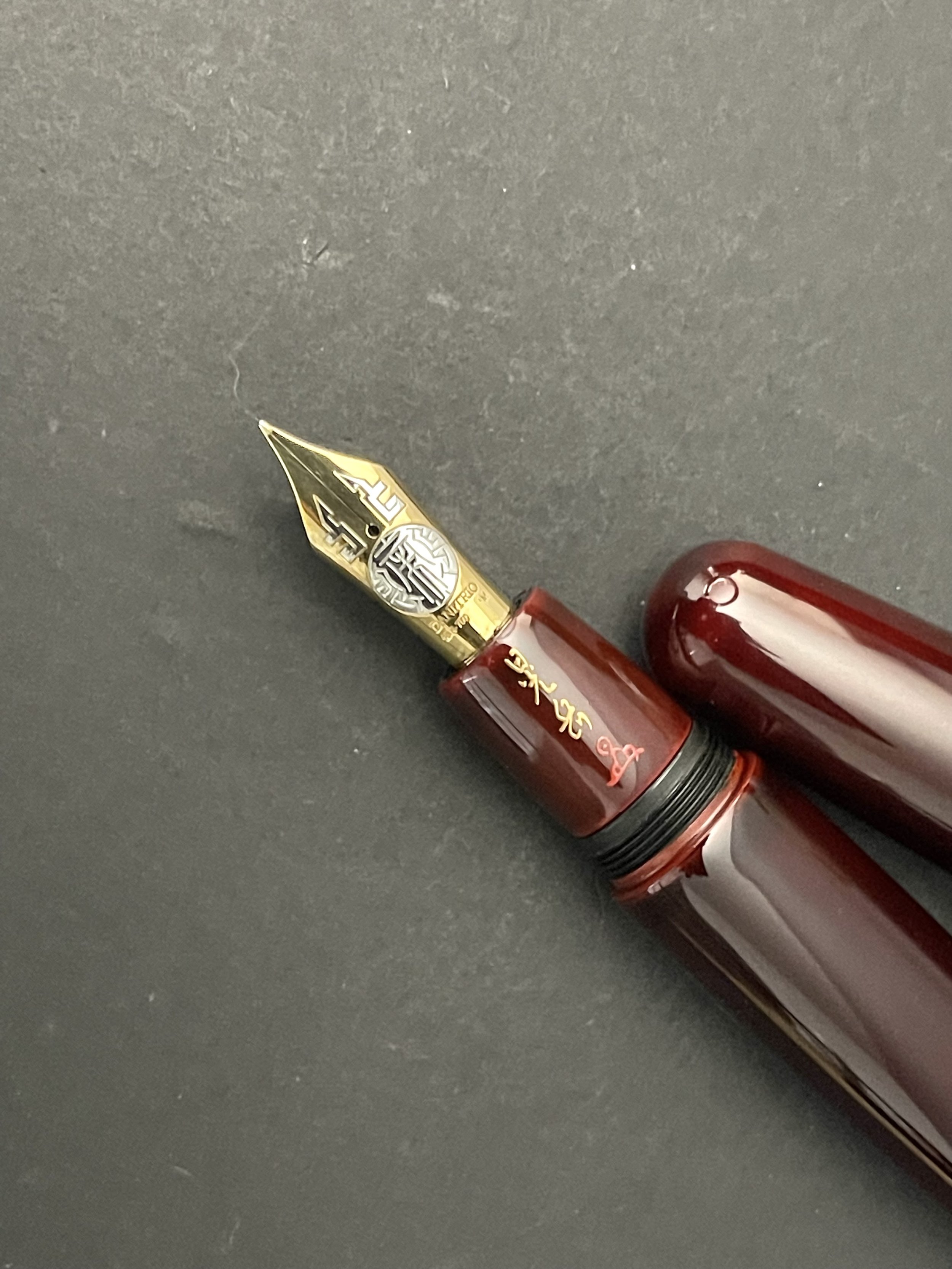

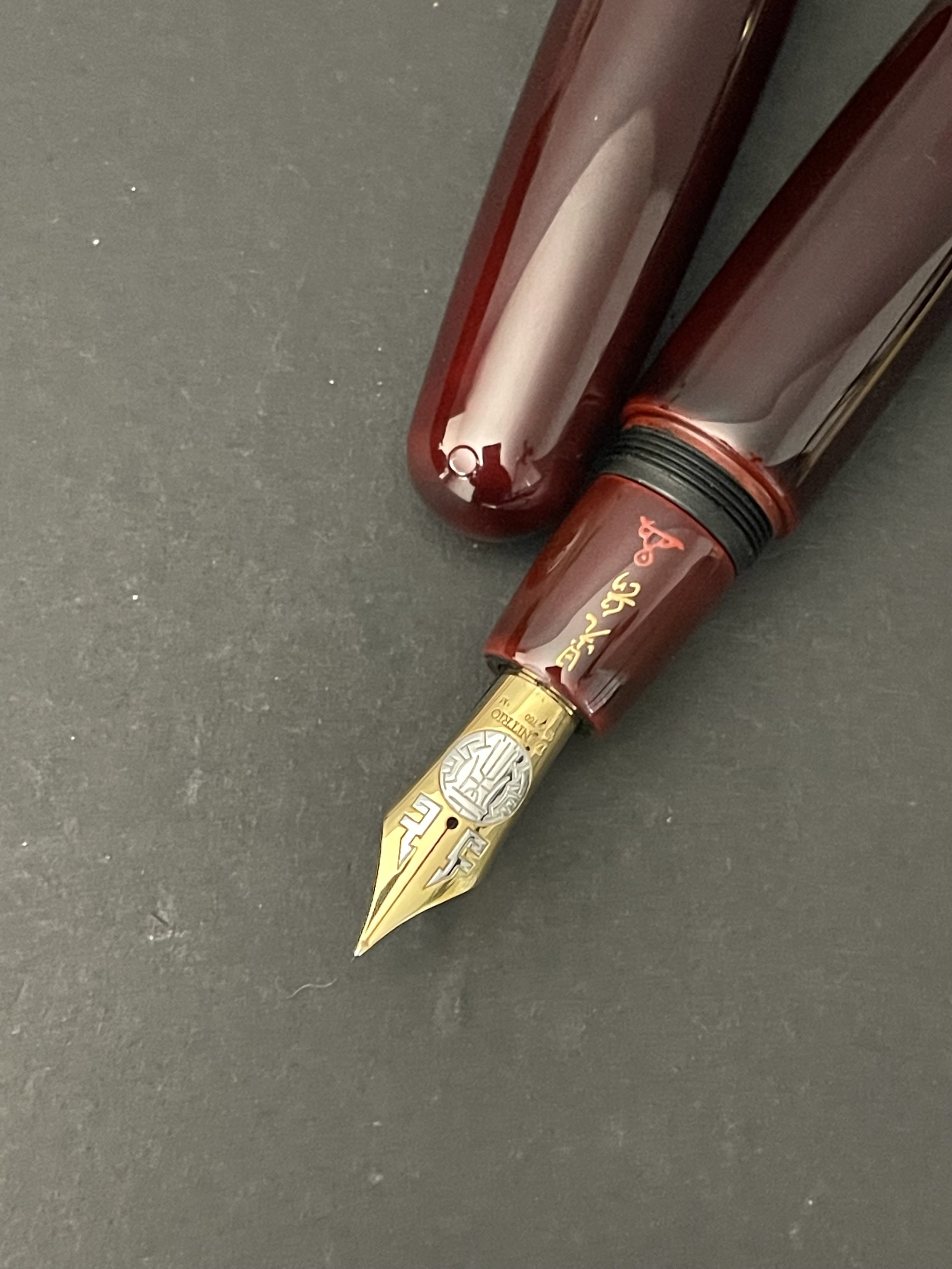
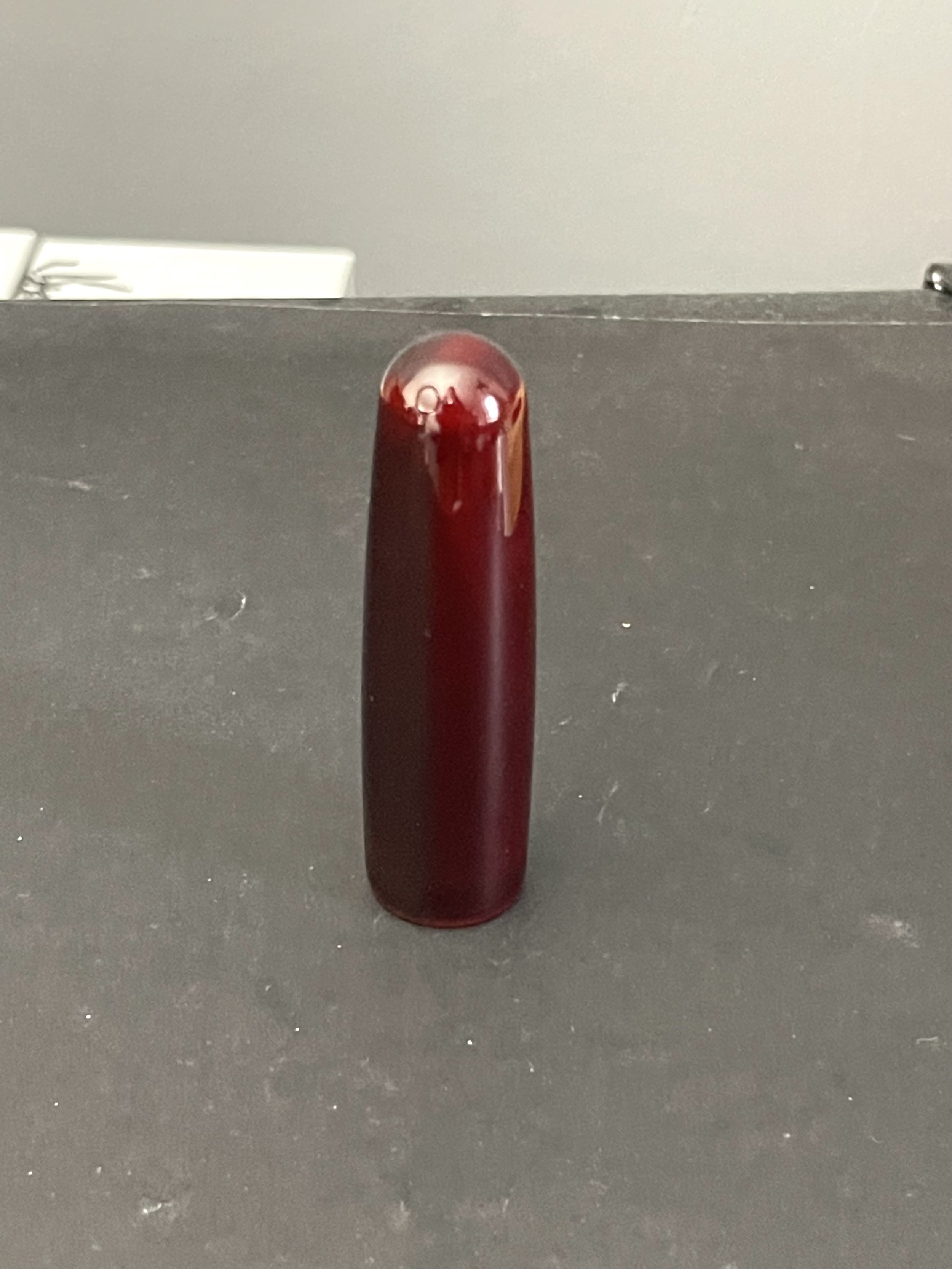
Danitrio Red Tamenuri on Mikado Fountain Pen
Danitrio Red Tamenuri on Mikado Fountain Pen
Tame-nuri describes the “clear” urushi coat that is applied to allow for an individual to see deep into the layers of the pen. This pen contains the traditional thinner edge around the cap and the barrel, allowing the the base color of the pen to be revealed.
To produce the tame-nuri effect, the nuri-shi (artisan) will apply suki-urushi (clearish brown) on the outer layer of the pen and then will burnish it. Suki-urushi is made up of an extremely high quality refined urushi. The high quality refinement involves a paper filtration process (also known as urushi-koshi) using Yoshino-gami (hand-made paper filters) which is a progressive filtration process where the filtration starts with binding pieces of Yoshino-gami together and squeezing out the urushi through them, followed by repeating this activity again but instead with larger quantities of pieces of Yoshino-gami bound together for finer filtration.
Tame-nuri creates an amazing depth on the pen that no other material can replicate. As soon as one sees these pens in person, they will immediately know why nuri-shi (artisans) believe urushi is living. Tamenuri allows for pens to come alive as it has transformational abilities with its material being able to change colors over time – tame-nuri does not deteriorate like most materials when exposed to light, but instead it evolves gracefully into another colour.
The Mikado is a Danitrio series. Mikado means "Emperor" in Japanese.
Cap Length: 73 mm (2.87")
Cap Diameter: 20 mm (0.79")
Barrel Length: 140 mm (5.51")
Barrel Diameter: 19 mm (0.75")
Pen Length (Closed) 163 mm (6.42")
Pen Length (Posted)Cap does not post
Net Weight: 42.5 g (1.25 oz)
Net Weight (w/ink full) 50 g (1.3 oz)
Filling System: Japanese Eye Dropper
Condition: Mint, Comes in a Japanese Kimono Pen Sleeve
Maki-e Artist: Koichiro Okazaki (Kogaku)
You could say that urushi runs in Okazaki-san’s blood. He was born in 1959 and comes from a family of urushi artists. His father was a maki-e master.
In his youth, Okazaki-san spent five years apprenticed to an urushi master. Upon completion of his apprenticeship, he became an independent master artisan. He also learned sadō, the Japanese tea ceremony. His schooling grounded him with thorough knowledge of Japanese culture, history, and mythology.
As a master artisan, Okazaki-san paints maki-e on many traditional accessories, watch faces, hair pins, combs, jewelry, and fine writing instruments. Okazaki-san’s artisan signature is ‘Kogaku’. You can see this painted in small characters on each of his pens.
The Japanese government has recognized Okazaki-san as a Dento Kogei-shi, an honorary title meaning “Master of Traditional Crafts.” Only artisans who have made a significant contribution to their craft are given this designation.
Okazaki-san’s maki-e creations have won many awards at national art exhibitions over the years. In short, he is a renowned maki-e artisan and a national treasure.

